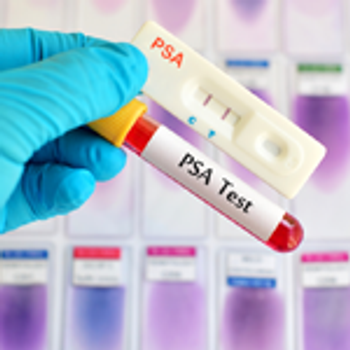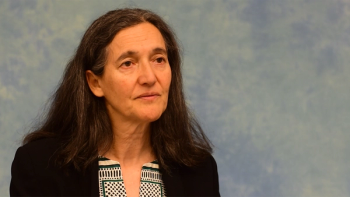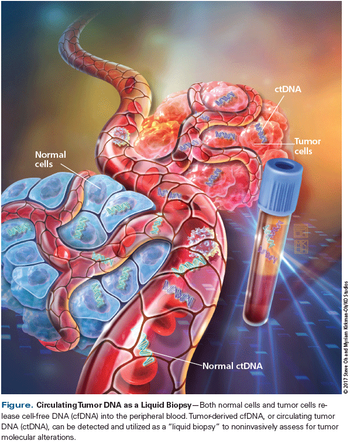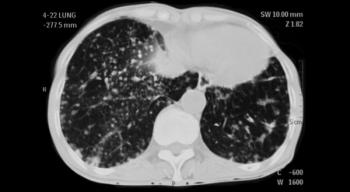
The FDA has granted accelerated approval to nivolumab (Opdivo) for the treatment of patients with hepatocellular carcinoma who have previously received sorafenib.

Your AI-Trained Oncology Knowledge Connection!


The FDA has granted accelerated approval to nivolumab (Opdivo) for the treatment of patients with hepatocellular carcinoma who have previously received sorafenib.

Patients who reported severe distress were more likely to miss radiation therapy appointments and be hospitalized during the course of their therapy compared with patients with lower distress scores, according to the results of a study presented at the ASTRO Annual Meeting in San Diego.

Undergoing SBRT prior to starting maintenance chemotherapy significantly improved progression-free survival in patients with limited metastatic non–small-cell lung cancer, according to the results of a phase II study presented at the ASTRO Annual Meeting.

A substantially higher number of nonelderly patients with newly diagnosed cancer had insurance after implementation of the Affordable Care Act, according to the results of a new study.

The FDA has approved the first cancer therapy biosimilar in the United States, a biosimilar to Avastin (bevacizumab) for the treatment of multiple types of cancer, including colorectal, lung, brain, kidney, and cervical cancers.

An analysis that corrected for differences in implementation found that the two main trials of prostate cancer screening in Europe and the United States both show a reduction in prostate cancer mortality with screening.

The FDA has approved the first gene therapy available in the United States, tisagenlecleucel (Kymriah), for the treatment of pediatric and young adult patients with relapsed or refractory B-cell precursor acute lymphoblastic leukemia.

Survivors of childhood cancer are less likely than the general population to receive the human papillomavirus (HPV) vaccine, according to a study.


Annual mammography screening starting at age 40 prevents the most breast cancer deaths, according to a comparison of the three most common screening recommendations.

This video reviews the role of surgery in the management of patients with mesothelioma.

This video highlights trials studying the long-term impact of adjuvant tamoxifen and aromatase inhibitors for the treatment of patients with postmenopausal breast cancer.

This video reviews the impact of the SOFT/TEXT trials for the treatment of patients with premenopausal breast cancer, and ways to best use the results.

So-called “narrow network” healthcare plans are more likely to exclude oncologists who are associated with NCI-designated or NCCN Cancer Centers, according to a new study.

Participating in a palliative care consultation significantly decreased healthcare use of Medicare beneficiaries with advanced cancer at the end of life.

In this interview we discuss a recent study that linked periodontal disease with an increased cancer risk, specifically melanoma and cancers of the lung, breast, esophagus, and gallbladder.

Here we review the clinical data supporting these different plasma genotyping methodologies, and present a practical approach to the interpretation of the results of these tests.

In this interview we discuss the issue of burnout in oncology, including signs and risk factors, how it might affect patient care, and strategies for prevention.

With some analyses warning of an impending oncologist shortage, are we truly approaching a point of critical need? Are practice extenders such as advanced practitioners the best solution to fill that gap or are there other options?

A Florida doctor was sentenced to serve nearly 6 years in prison for a variety of charges relating to her use of fraudulent medications to treat cancer patients.

Opioid prescriptions were significantly higher among cancer survivors compared with controls, even years after attaining survivorship.

Computed tomography (CT) screening for lung cancer could lead to increased rates of smoking cessation in a high-risk population, with this “teachable moment” extending even to those with negative scan results.

Surgical management of the patient with non–small-cell lung cancer (NSCLC) is complex. When should stereotactic body radiation therapy be used? What are the advantages of video-assisted thoracic surgery? Test your knowledge in our latest quiz.

Breast cancer subtypes generally did not respond differently to radiotherapy following breast-conserving surgery, according to long-term follow-up of a randomized trial.

The US Food and Drug Administration has approved the tyrosine kinase inhibitor ibrutinib (Imbruvica) for adult patients with chronic graft vs host disease who have failed on one or more lines of prior systemic therapy.

The FDA has announced a new comprehensive plan for tobacco and nicotine regulation designed to serve as a road map to better protect American children and reduce tobacco-related disease and death.

In our latest ongoing cartoon series set in the world of oncology and cancer care, a radiologist uncovers a known risk factor.

Adherence to screening protocols at cancer centers resulted in fewer emergency department visits and hospitalizations in the 2-month period after the screening.

This video reviews the mechanisms of acquired and upfront endocrine resistance in estrogen receptor–positive breast cancer as well as research into strategies for overcoming this resistance.

This video discusses chemotherapy decision-making in early-stage breast cancer, and reviews tools such as PREDICT 2.0 and the MammaPrint 70-gene assay that can help guide treatment.